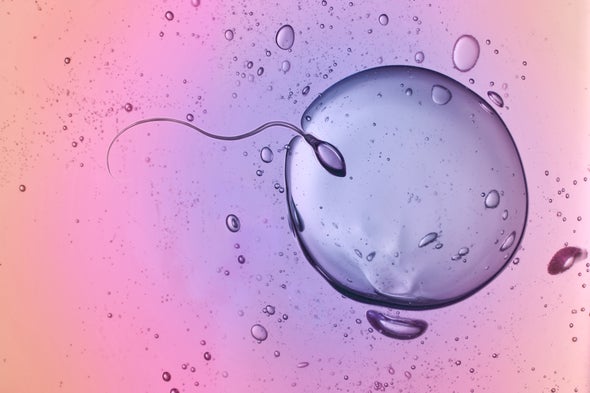When you see or hear a reference to “the 1 percent,” most people think of socioeconomic status—the people with the top 1 percent of wealth or income in the United States, which is how the term is commonly used in our culture.
Not us, though.
What we think of is the fact that the whole spectrum of reproductive problems in males are increasing by about 1 percent per year in Western countries. This “1 percent effect” includes the rates of declining sperm counts, decreasing testosterone levels and increasing rates of testicular cancer, as well as a rise in the prevalence of erectile dysfunction. On the female side of the equation, miscarriage rates are also increasing by about 1 percent per year in the U.S., and so is the rate of gestational surrogacy. Meanwhile, the total fertility rate worldwide has dropped by nearly 1 percent per year from 1960 to 2018.
When people hear of this, there’s often a natural instinct to shrug it off, believing that 1 percent per year isn’t really a big deal. But it is a huge deal! It adds up to more than 10 percent per decade and more than 50 percent over 50 years. When you consider that sperm counts declined by 50 percent in just 40 years, as Shanna's meta-analysis published in a 2017 issue of the journal Human Reproduction Update showed, it’s difficult to deny or discount how alarming this is.
So, we continue to wonder: Where is the outrage on this issue? The annual 1 percent decline in reproductive health is faster than the rate of global warming (thankfully!)—and yet people are up in arms about global warming (and rightly so) but not about these reproductive health effects. To put the 1 percent effect in perspective, consider this: scientific data show a 1.1 percent per year increase in the number of children diagnosed with autism spectrum disorder between 2000 and 2016, according to the Centers for Disease Control and Prevention. People have been rightly unnerved about this.
Why aren’t people equally troubled by reproductive damage to males and females? Maybe it’s because many don’t realize that these worrisome changes are happening, or that they’re marching along at the same rate. But everyone should. After all, these reproductive changes can hardly be a coincidence. They’re just too synchronous for that to be possible.
The truth is, these reproductive health effects are interconnected, and they are largely driven by a common cause: the presence of hormone-altering chemicals (a.k.a., endocrine-disrupting chemicals, or EDCs) in our world. These hormone-hijacking chemicals, which include phthalates, bisphenol A, and flame retardants, among others, have become ubiquitous in modern life. They’re in water bottles and food packaging, electronic devices, personal-care products, cleaning supplies and many other items we use regularly. And they began being produced in increasing numbers after 1950, when sperm counts and fertility began their decline.
Exposure to these chemicals is especially problematic during pregnancy because what happens during pregnancy doesn’t stay in pregnancy. Rather, an expectant mother’s exposure to toxic chemicals in the air she breathes, the water she drinks, the foods she eats and the products she slathers on her skin can enter her body (and hence the fetus) and influence her baby’s reproductive development. This is particularly true early in pregnancy—in what’s called the reproductive programming window—and it’s especially true for male babies.
For example, if a woman is exposed to chemicals that block the action of androgens during the first trimester of pregnancy, this can affect the reproductive development of the male fetus in numerous ways. It can result in a shortening of the anogenital distance (AGD), the span from the anus to the base of the penis, which is significant because research has shown that a shorter AGD correlates with a smaller penis and, in the adult, a lower sperm count. In addition, prenatal disruption of the male hormonal system can result in reduced testosterone levels and increase the risk that a baby boy will have undescended testicles (cryptorchidism) or a particular type of malformed penis (hypospadias) at birth. And if a boy is born with these genital defects, he will have an increased risk of low sperm count and testicular cancer as an adult.
This cluster of related reproductive problems—for both men and women—is presenting huge challenges to the world’s population. There’s the obvious challenge related to fertility issues and the declining birth rate. But endocrine disruption is also a culprit in rising rates of autoimmune disorders as well as the growing epidemic of obesity and metabolic syndrome (a cluster of conditions that increases the risk of heart disease, stroke and type 2 diabetes). Some of these reproductive effects are even associated with an increased risk of premature death.
To put it mildly, these issues are more important than the “1 percent” people usually pay attention to, which means: We need to shift our collective focus. It’s time for us to make it a priority to demand that endocrine-disrupting chemicals in the everyday products are replaced with chemicals that don’t affect our hormones and don’t persist in the environment. It’s also time to establish better testing methods and regulatory actions so that only safe chemicals can enter the market and our bodies. In other words, we need to stop using each other and our unborn children as lab rats for EDC exposures. The health and the future of the human race really do depend on it.

